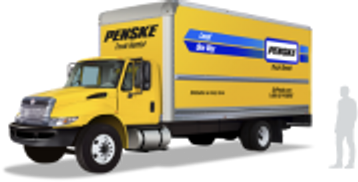Take your car with you. Safely transport your vehicle to your new destination by renting a tow dolly or car carrier.
Order supplies like moving boxes, furniture pads and hand trucks to make moving a little easier.
Take a look at our coverage bundles, designed to provide superior convenience while offering protection for you and your stuff.
Find experienced moving labor, professional drivers and self-storage rentals to help you on moving day.
Pick-Up Locations Not Found
No pick-up locations found in selected area. Please retry your search using an alternate city or ZIP code.
Drop-Off Locations Not Found
No drop-off locations found in selected area. Please retry your search using an alternate city or ZIP code.
No Locations Found
No pick-up or drop-off locations in selected area. Please retry your search using alternate cities or ZIP codes.
System Error, Please Call
Sorry, our site is currently experiencing issues. Please call us at 1-844-847-9577 , or try again later.
No 22' Trucks Available
There is no immediate availability for the truck size you have selected. Would you like to view other available truck sizes or change your dates?
No Trucks Available
There is no immediate availability in your area on the pick-up date you selected. Please call us at 1-844-847-9577 to discuss options..
Locations Not Found
Sorry, we can't find any results in your search area. Please retry your search using an alternate location.
Something Went Wrong
Please try again. If the problem continues, restart your reservation or call 1-844-847-9577 .
Change Time or Call
Online reservations must be made at least 3 hours before pickup in your location’s time zone and must have a minimum duration of 24 hours. To continue, select a new pickup date or call 1-844-906-3404 .
Change Time or Call
Online reservations must be made at least 24 hours before pickup in your location’s time zone and must have a minimum duration of 24 hours. To continue, select a new pickup date or call 1-844-906-3404 .
Change Time or Call
Online reservations must be made at least 48 hours before pickup in your location’s time zone and must have a minimum duration of 24 hours. To continue, select a new pickup date or call 1-844-906-3404 .
Return to Pickup
Location?
It looks like you’ll be staying within 25 miles of your pickup location. Returning your truck to the same location may offer you a lower cost. Would you like to return your truck to the pickup location or keep the selected drop-off spot?
What's the Difference?
| Location Options | Different Location(Drop-off at different location) | Same Location(Drop-off at same location) |
|---|---|---|
| Return Truck To | Different Location | Same Location |
| Truck Offers | 12', 16', 22', 26' Truck | Cargo Van, 12', 16', 26' Truck |
| Rental Quote | Pay on a per-trip basis | Pay for the miles/days used |
| Trip Type | Long Distance, Interstate | Short Distance, Same City |
| Distance to Destination | Over 25 miles | Within 25 miles |
| Drop-off Date |
Distance determines
drop-off date | Same day to up to 9 days |
| Mileage | Unlimited Mileage | Pay per mileage used |
| Additional Days | Up to 3 days: $100 eachUp to three additional days at $100 per day | ― |
| Towing Offered | ― | |
| Security Deposit for Credit Card | ― |

Knowledge Center
Tips To Pack Fun Into Your Summer Move
With the hottest days of summer yet to come — and your moving day fast approaching — it’s important to plan ahead for the ride to your new destination.
You’ve booked your Penske truck and selected your moving date, but now you have to decide how to spend your time on the road. No matter how long or short the drive is, or if you’re traveling alone or with a group, we have you covered with tips to tackle the big moving day.
Riding Solo
Whether you’re a seasoned pro at moving by yourself or beginning a new chapter out on your own, we want you to look forward to your move. An independent move can ignite a bundle of excitement and nerves, so here are a few suggestions to fill your time on the road:
- Call your loved ones to say hello, or that friend you’ve been meaning to catch up with for far too long. With no one else in the car to bother, you have no excuses. Be sure to use a hands-free device for your safety and adhere to certain state laws.
- Try a new podcast or moving playlist — there’s no better time to start a new podcast or enjoy a themed playlist than with miles of road ahead of you.
- Cozy up behind the wheel with a good audiobook (or two if you’re traveling a further distance). It’s the perfect time for those who are busy 24/7 to catch up on the latest blockbuster and get back to “reading.”
Family Fun
A new house marks a fresh start for each family member, so everyone might be feeling a little different about what they’re leaving behind and what’s to come. Ease into your family’s new beginning with some entertainment for all ages.
- Any set amount of time on the road calls for some good old game time! Some of our favorites include the License Plate Game, iSpy, 20 Questions and the ABC Game. To ensure interest among your older children, add stakes to the game — maybe a small gift card or favorite snack. The prize doesn’t have to be monetary either — a chance to choose the next song can be just as motivating because what child doesn't get tired of listening to their parents’ music?
- Enjoy some classic nap time (for the passengers, of course). Let’s face it, everyone of all ages enjoys a nice nap to feel well-rested. A bonus is the sweet sounds of silence for the driver and/or other passengers.
Adventuring with Your Partner
Maybe it’s the first time moving in together or you’re just itching for a new experience in a different city, but a move with your significant other is perfect for spending quality time together. Treat the road trip, no matter how short or far, as a date for you and your partner. Experiences always make for the best memories together, so pick an activity or place along the way to visit. Here are some of our favorite suggestions:
- Stop and explore a National Park. There are many found across the country, all of which offer different views and experiences. Visiting a state park and observatory is also a great option and the perfect opportunity to break up your drive with a hike and stunning views.
- What better way to enjoy a road trip together than to cross off a bucket list item along the way? Whether you’re visiting a new city or seeing the northern lights for the first time (or something else completely), take that detour together and make your bucket list a little bit shorter.
- Look ahead and discover a museum or historical site en route as a pit stop on your way. Every state has endless options. And remember, with free, unlimited miles on all one-way moves, you can afford to take the longer route.
Need more options? Here are some additional ways to make your cross-country move fun.

Tips for Everyone
- Stock up on water and all your favorite hydration items (maybe some caffeine for the longer drives), and of course, road trip snacks are a must!
- Whether you’re by yourself or are traveling with the whole gang, make sure to curate road trip playlists beforehand. Check out our Penske Spotify playlists for inspiration.
- If you’re in a car following your Penske truck, switch up who’s driving, riding shotgun, in the backseat, etc. This is crucial, especially for those with longer drives. Stretch out your legs and take turns on who's in charge of directions, too.
- Aside from stopping for a meal, take the time to stop for a cold sweet treat for a truly sweat-free move. Nothing’s more refreshing than a pitstop for ice cream, frozen drinks or whatever your heart desires.









